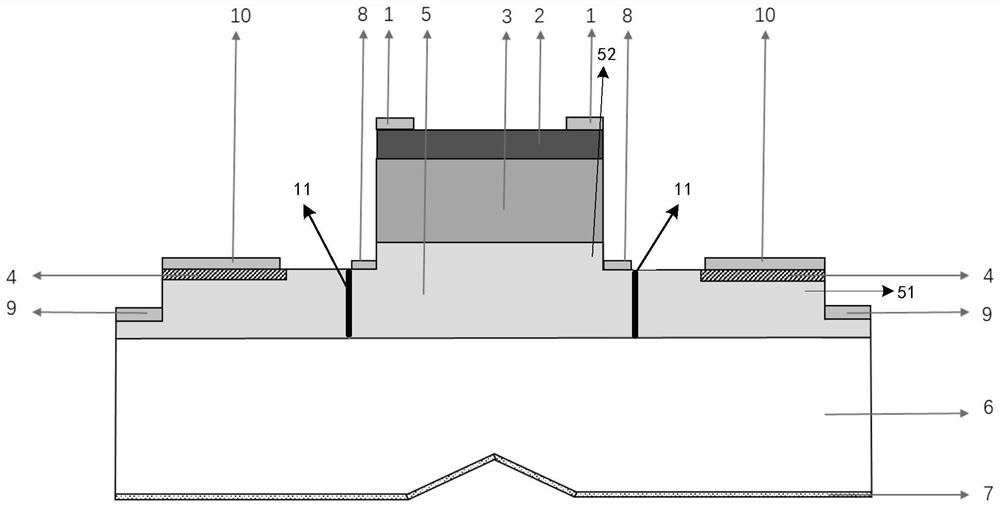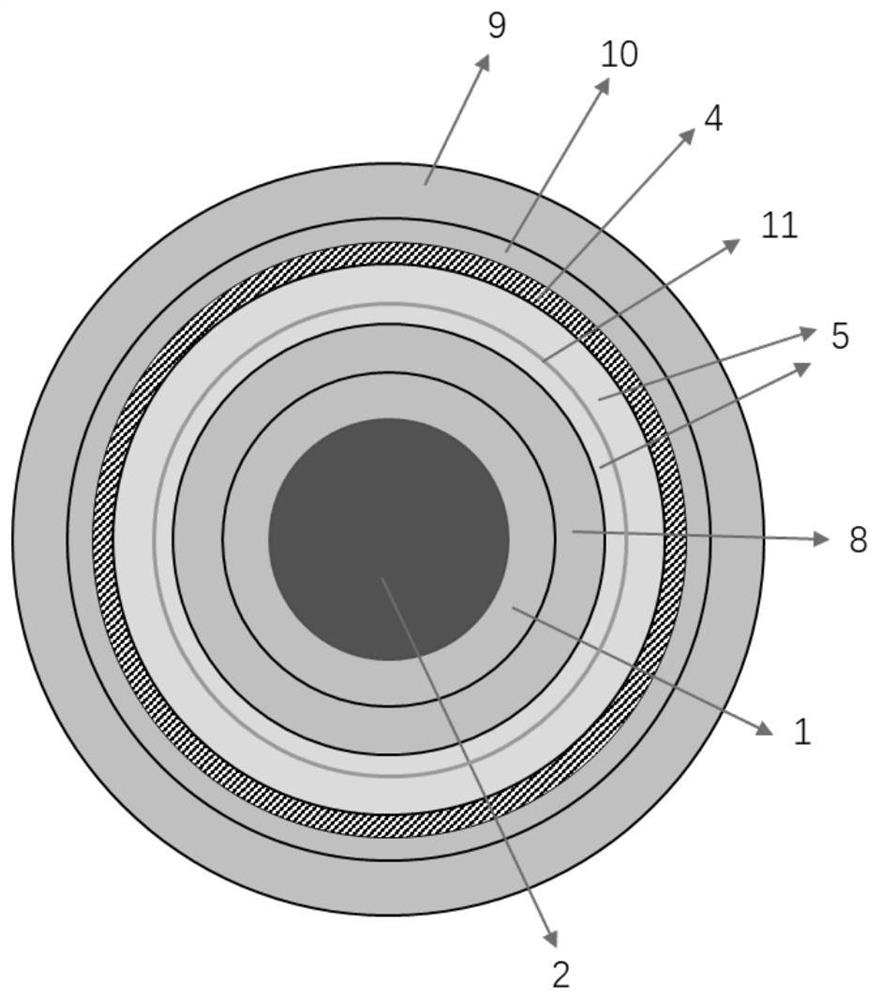Visible-infrared dual-band photoelectric detector
A photodetector and dual-band technology, applied in the direction of circuits, electrical components, semiconductor devices, etc., can solve the problems of detection spectral range limitation, limit application, restrict the development of silicon-based photodetectors, etc., achieve good transmission performance, broaden the Application fields, improving the effect of detecting the spectral range
- Summary
- Abstract
- Description
- Claims
- Application Information
AI Technical Summary
Problems solved by technology
Method used
Image
Examples
Embodiment Construction
[0038] In order to enable those skilled in the art to better understand the solutions of the present invention, the following will clearly and completely describe the technical solutions in the embodiments of the present invention in conjunction with the drawings in the embodiments of the present invention. Obviously, the described embodiments are only It is an embodiment of a part of the present invention, but not all embodiments. Based on the embodiments of the present invention, all other embodiments obtained by persons of ordinary skill in the art without making creative efforts shall fall within the protection scope of the present invention.
[0039] The terms "first", "second", "third", "fourth" and the like in the description and claims of the present invention and the above drawings are used to distinguish similar objects, but not necessarily to describe specific sequence or sequence. It is to be understood that the terms so used are interchangeable under appropriate ...
PUM
 Login to View More
Login to View More Abstract
Description
Claims
Application Information
 Login to View More
Login to View More - R&D
- Intellectual Property
- Life Sciences
- Materials
- Tech Scout
- Unparalleled Data Quality
- Higher Quality Content
- 60% Fewer Hallucinations
Browse by: Latest US Patents, China's latest patents, Technical Efficacy Thesaurus, Application Domain, Technology Topic, Popular Technical Reports.
© 2025 PatSnap. All rights reserved.Legal|Privacy policy|Modern Slavery Act Transparency Statement|Sitemap|About US| Contact US: help@patsnap.com



